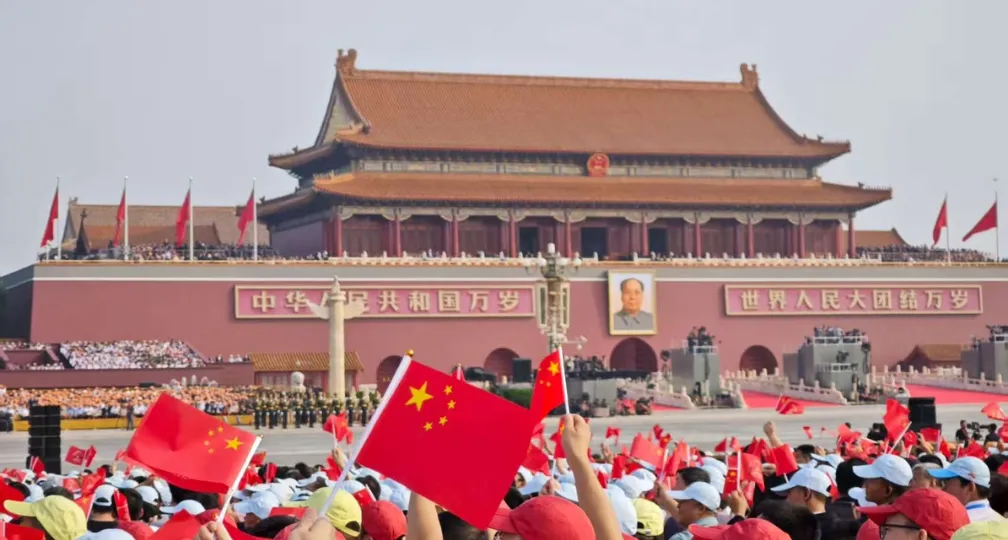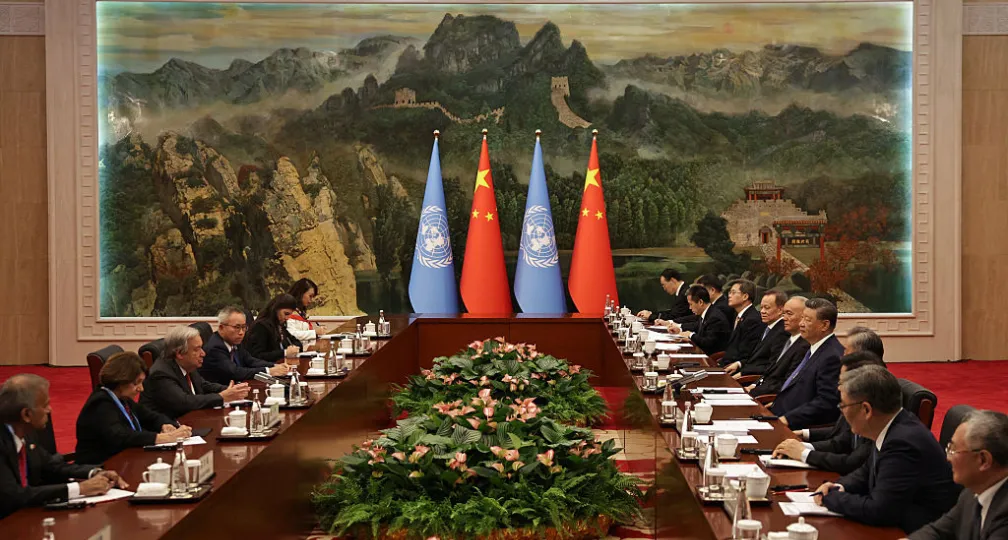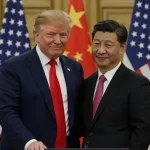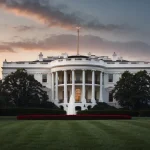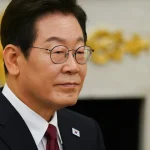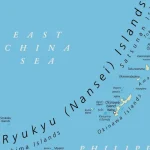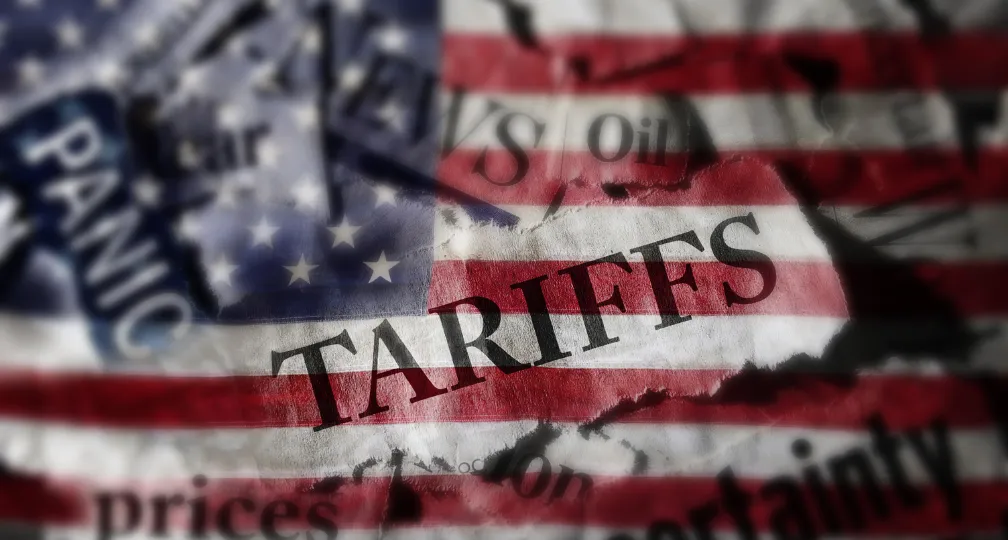Why the EU economy faces hard choices between Trump and China
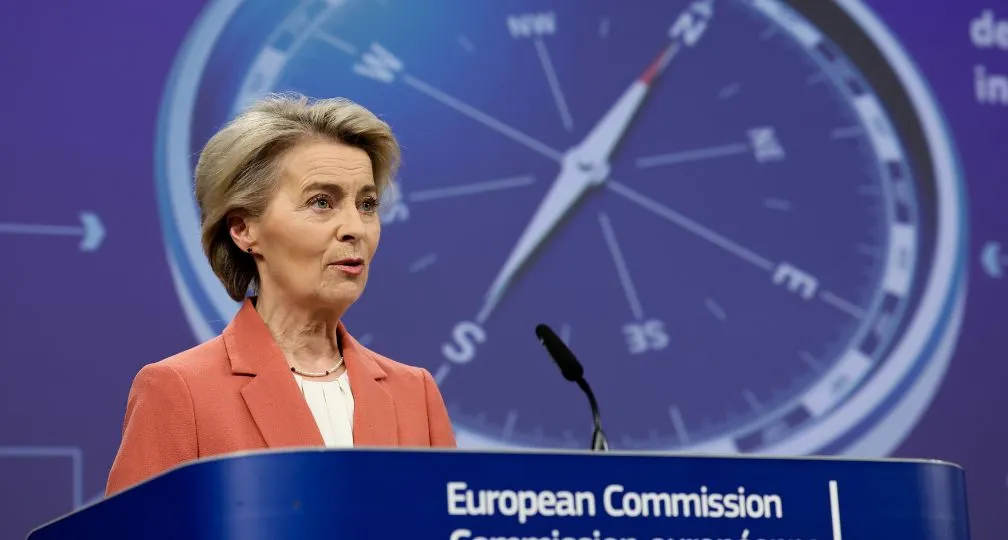
The latest regulatory developments on economic security & geoeconomics
By Paul Nadeau, Visiting Research Fellow, Institute of Geoeconomics (IOG)
Trump Announces Trade Deal with Japan: On July 23, Donald Trump announced on the TruthSocial social media network that Japan and the United States had reached a trade agreement whereby Japan’s tariff rate would be lowered from 25 percent to 15 percent, including autos (specifically, a 12.5 percent tariff will be applied on top of the 2.5 percent basic tariff, bringing the total to 15 percent) though tariffs on steel & aluminum will be maintained at 50 percent. Meanwhile, Japan has committed to increase rice imports within the minimum access framework, strengthening resilient supply chains for economic security, financial institutions connected to the Japanese government, such as the Japan Bank for International Cooperation, will commit to $550 billion in investment in the United States, and that U.S. autos would be accepted without additional safety inspections.
Trump Tariffs Copper: On July 8, Donald Trump announced that the United States would impose tariffs of 50 percent on copper imports beginning August 1. The announcement follows an investigation into the national security implications of copper imports into the United States under Section 232 of the Trade Expansion Act of 1962. During the announcement, he also suggested the possibility of raising tariffs on pharmaceuticals to 200 percent under the same authority.
Trump Sends More Tariff Letters: Donald Trump sent letters announcing that tariffs on Canada would increase to 35 percent while tariffs on the European Union and Mexico are set to increase to 30 percent. Trump justified the tariffs by blaming trade deficits with the EU for harming U.S. national security and accusing Mexico of not doing enough to combat the narcotic trade. The tariffs on Canada would exempt goods in compliance with the United States-Mexico-Canada Agreement (USMCA), while the 35 percent tariff on Mexico would replace the 25 percent tariff already proposed but it is not clear if USMCA-compliant goods would be exempted as with Canada.
Retaliation on Pause: European Commission President Ursula von der Leyen said that the EU would postpone retaliatory measures against the United States until August in acknowledgement of Trump’s deadline being extended until August 1, and Canada said it would postpone retaliatory measures as well.
Trump Targets Brazil: Trump announced in a letter that Brazil would be hit with 50 percent tariffs despite having a trade surplus with the United States. Trump justified the tariffs by accusing Brazilian president Luiz Inácio Lula da Silva of undertaking a “witch hunt” against Jair Bolsonaro through charges related to Bolsonaro’s 2023 efforts to overturn the presidential election in his favor.
Shortly after, the Office of the U.S. Trade Representative announced that it would launch an investigation into Brazil’s trading policies under Section 301 of the Trade Act of 1974 which allows the United States to impose tariffs or withdraw from agreements with countries engaging in unfair trade practices or violating trade agreements with the United States. Specifically, the investigation will consider Brazil’s policies related to digital trade & electronic payment services, preferential tariffs, anti-corruption interference, intellectual property protection, ethanol market access, and illegal deforestation.
Indonesia, United States Reach a Deal: On July 16, Indonesian president Prabowo Subianto confirmed that his country had reached an agreement with Trump whereby Indonesia would remove all duties on U.S. imports and purchase $15 billion worth of U.S. energy and $4.5 billion of U.S. agricultural products, along with 50 Boeing planes. In return, the United States will lower Indonesia’s tariff rate from 32 percent to 19 percent.
Malaysia Will Require Permits for AI Chip Exports: On July 14, Malaysia announced that it would require permits for exports of high-performance U.S. AI chips effective immediately in an effort to counter the potential diversion of high-end chips to China. Malaysia’s growing data center industry relies significantly on Nvidia chips and would have been impacted by a proposed U.S. rule to require export licenses for export to Malaysia and Thailand that was withdrawn in May.
EU Launches Series of Sanctions toward Russian, Iranian Activities: The European Union announced a series of different sanctions targeting Russia and Iran, specifically five individuals responsible for serious violations or abuses of human rights and for the repression of civil society and democratic opposition in Russia, nine individuals and six entities responsible for Russia’s destabilizing actions abroad, including through foreign information manipulation and interference, seven individuals and three entities responsible for actions aimed at destabilizing, undermining, or threatening the sovereignty and independence as well as the democracy, rule of law, and stability of the Republic of Moldova, eight persons and one entity under the EU Global Human Rights Sanctions Regime for committing serious human rights violations and abuses on behalf of Iranian state bodies outside of Iran.
Analysis: Why the EU economy faces hard choices between Trump and China
By Andrew Capistrano, Visiting Research Fellow, Institute of Geoeconomics (IOG)
President Trump returned to the White House with an ambitious agenda to impose historically high tariffs in an attempt to reduce persistent US bilateral trade deficits. Since China and the EU respectively have the largest and second-largest trade surpluses with the US, some observers—particularly in China—thought that Trump’s tariff gambit might form a catalyst to move the two economies closer together, and in doing so drive a wedge in the Transatlantic relationship. But so far this has not been the case.
Rather, the EU finds itself caught between two increasingly difficult trading partners. On the one hand, the EU is negotiating with the US to avoid a 30% tariff on all exports set to take effect on August 1 if no bilateral deal is reached. On the other hand, it is also clashing more openly with China on trade, security, and economic imbalances.
The EU’s options are narrowing. So far, the US has completed bilateral “trade deals” (more accurately, “trade frameworks”) with the UK, Vietnam, Indonesia, the Philippines, and Japan; from the EU’s perspective these suggest suboptimal results. Each of these trading partners accepted US tariff bands between 10% and 20%, and the EU is unlikely to escape a similar outcome. Best-case scenarios point to a 10% tariff; more likely is a compromise closer to Japan’s 15% rate or even slightly higher. But analysts warn that even a 10% tariff on EU goods could shave 1% off EU GDP, hitting export powerhouses like Germany and the Netherlands especially hard.
Some US “deals” also include economic security provisions. For Vietnam and Indonesia these are aimed to prevent the transshipment of Chinese goods, and for the UK, to facilitate cooperation on “non-market policies” by “third countries”, particularly those involving heavy subsidies and forced technology transfers. It is likely that the US will push for a clause similar to the UK framework in any US-EU agreement (as of this writing, any economic security dimension to Japan’s “deal” is unclear).
That puts the EU in a bind. If a US-EU trading framework includes economic security provisions that China sees as counter to its interests, this will only exacerbate the EU-China trade relationship.
But despite Trump’s disruptive trade approach, there are structural reasons why the EU and China have found it challenging to improve economic relations. First, US tariffs on China have triggered an export pivot to Europe, placing the EU at the receiving end of China’s industrial overcapacity. In the end, Brussels may be unhappy with Washington’s tariffs on the EU, but both agree that Chinese subsidies, cheap capital, and dumping go beyond normal competition. The EU is increasingly aware that if China is unable to export deflation and overcapacity to the US in order to achieve its government’s growth targets, Europe will need to strengthen economic security measures to avoid absorbing rerouted trade flows.
Second, as Chinese exports to Europe rise, the EU’s exports to China have dropped precipitously. European firms are rapidly losing market share to Chinese domestic competitors, and China’s state-backed firms are ramping up exports in precisely the sectors where the EU hoped to gain global market share: green technologies, such as electric vehicles, solar panels, and advanced batteries. Trade is becoming more imbalanced, not less, reducing the EU’s incentive to refrain from implementing its own tariffs so as to prevent Chinese retaliation on European goods.
All eyes are therefore focused on the long-awaited EU-China trade dialogue, scheduled for July 24 in Beijing. European Commission President Ursula von der Leyen and an EU delegation will hold talks with Xi Jinping and Chinese officials, but due to the aforementioned structural issues, it is far from clear that anything of substance will emerge.
Von der Leyen has been unusually blunt in the run-up to the EU-China meeting. On July 8, she delivered a rather hardline speech on their economic relationship, reaffirming a three-part framework: the EU must cooperate with China on global issues (e.g., climate), but also rebalance the trade relationship, and continue to de-risk the European economy. Her argument was that, for now, strategic decoupling was not in Europe’s interest, however rebalancing will be essential.
The EU ran a more than €300 billion trade deficit with China in 2024, and quarterly figures for 2025 suggest this year’s will be even bigger. Part of the problem, according to von der Leyen, is Beijing’s “Buy China” policy, where domestically produced goods and services get an automatic 20% price advantage in government procurement. As she put it: “This is simply not fair. The system is explicitly rigged”.
Economic security measures, however, may only spread deteriorating trade relations into other sectors. When Brussels sought to reduce public procurement of Chinese medical devices, Beijing retaliated against European medical firms. Meanwhile, China’s export controls on rare earth magnets and critical minerals—intended as retaliation for Trump’s tariffs—hit the EU too. Once again, Europe has been caught in the crossfire. Adding to the strain, China’s support for Russia’s war in Ukraine has undermined EU sanctions.
Europe thus stands at a strategic crossroads. The EU’s old model, anchored in American defense guarantees, Chinese markets and manufacturing, and cheap Russian energy, has come undone. It appears that there are four possible paths forward.
First, the EU could fully align with the US, beginning with securing a trade framework by August 1. This is perhaps the most likely short-term move (EU negotiators are set to meet their US counterparts ahead of the EU-China meeting). Avoiding 30% US tariffs could buy Brussels time to pursue internal reforms like capital market integration, defense spending, and supply chain resilience. But this approach relies heavily on Trump’s goodwill—a fragile foundation for long-term policy—and it risks cementing the EU’s status as a junior partner, not a co-equal Transatlantic actor.
Second, the EU could pursue alignment with China at the bilateral meeting in Beijing. Though once entertained by some European observers, this option now seems far-fetched. China’s export strategy, support for Russia, and aggressive posture toward European firms have soured relations. And far from drawing Europe closer, Trump’s trade war has exposed just how divergent EU and Chinese interests really are.
Third, and perhaps most intriguing, the EU could leverage its internal market to uphold a fractured form of the international trading system: it could pursue a “non-aligned” third path by deepening ties with the Indo-Pacific. Trade talks with India could be finalized, and before arriving in Beijing von der Leyen stopped in Japan, where shared concerns about Chinese dumping and US unpredictability could bring the two sides closer. There is also an EU interest in expanding engagement with the CPTPP, and together the two economic blocs could form a formidable “third pole” amid the US-China geoeconomic rivalry. However, none of these markets can match the US for consumer demand, nor replace the Chinese industrial supply base. Trump’s bilateral “deals” with key CPTPP nations like Japan, and possibly India, further complicates Europe’s outreach.
The fourth path would be turning toward strategic autonomy in the face of challenges from the US and China. This may be the most ambitious—and ultimately the most durable—solution. Europe needs to de-risk not only from China but also the US, and although a more self-reliant EU would require significant internal reform, the payoff could be real economic sovereignty.
Leaders like French President Macron have long advocated for this course, and recent moves by Germany suggest that the mood is shifting. Confronted with Trump’s vacillation on supporting Ukraine, the German government has finally opened up the fiscal space for increased defense spending, and at the July NATO Summit the European allies announced they would increase defense spending to 3.5% of GDP, potentially rising to 5%. The economic equivalent to greater defense autonomy would be to deepen the single market, remove internal regulatory barriers, and promote European champions in technology and industry. Von der Leyen recently announced the creation of a European Savings and Investment Union to better mobilize the EU’s vast household savings, worth over €35 trillion. She also unveiled the “28th regime”, a single corporate rulebook for companies seeking to operate across the EU without navigating 27 national frameworks.
In parallel, the EU could adopt a more robust economic security toolkit. This would include instruments to counter Chinese dumping, reduce critical dependencies in sectors like pharmaceuticals and green tech, and offer incentives to keep fast-growing European firms at home. The Draghi report has already laid out blueprints for a new form of economic statecraft, one that blends industrial strategy with open markets. Such a model would position Europe as more than a buffer zone; instead, it would be a power center in its own right.
Ironically, a more independent EU might even be better respected by Trump. Just as Europe’s defense push won approval from Washington, an economic posture grounded in internal strength could stabilize Transatlantic relations over the long run. A more confident Europe would likely become a better partner to the US in a bifurcated economic order, not because it submits to American pressure, but because it stands on equal footing.
Yet unfortunately, as with defense autonomy, the EU is not ready to immediately embrace economic autonomy. The twin shocks of Trump and China may provide a necessary jolt in this direction, however the familiar issues of internal fragmentation and differing national economic interests will not be easily overcome. Nor will implementing the Draghi report’s recommendations come quickly (or cheaply).
In the short term the EU will have to pick a side. As it heads toward the July 24 Beijing meeting and Trump’s August 1 deadline, Brussels should recognize that neither nostalgia for multilateralism nor short-term accommodation will be enough. Europe must make hard choices—even if this means tilting toward Trump’s America.
(Photo Credit: shutterstock)
Disclaimer: The views expressed in this IOG Economic Intelligence Report do not necessarily reflect those of the API, the Institute of Geoeconomics (IOG) or any other organizations to which the author belongs.
API/IOG English Newsletter
Edited by Paul Nadeau, the newsletter will monthly keep up to date on geoeconomic agenda, IOG Intelligencce report, geoeconomics briefings, IOG geoeconomic insights, new publications, events, research activities, media coverage, and more.



Visiting Research Fellow
Andrew Capistrano is Director of Research at PTB Global Advisors, a Washington DC-based geopolitical risk consulting firm. Specializing in economic competition between the US/EU and China, he analyzes how trade, national security, and industrial policies impact markets, and his firm’s clients include Japanese corporations and government agencies. He previously worked in Tokyo at the US Embassy’s American Center Japan and as a research associate at the Rebuild Japan Initiative Foundation / Asia-Pacific Initiative. Dr Capistrano holds a BA from the University of California, Berkeley; an MA in political science (international relations and political economy) from Waseda University; and a PhD in international history from the London School of Economics. His academic work focuses on the diplomatic history of East Asia from the mid-19th to the mid-20th centuries, applying game-theoretic concepts to show how China's economic treaties with the foreign powers created unique bargaining dynamics and cooperation problems. During his doctoral studies he was a research student affiliate at the Suntory and Toyota International Centres for Economics and Related Disciplines (STICERD) in London.
View Profile
Visiting Research Fellow
Paul Nadeau is an adjunct assistant professor at Temple University's Japan campus, co-founder & editor of Tokyo Review, and an adjunct fellow with the Scholl Chair in International Business at the Center for Strategic and International Studies (CSIS). He was previously a private secretary with the Japanese Diet and as a member of the foreign affairs and trade staff of Senator Olympia Snowe. He holds a B.A. from the George Washington University, an M.A. in law and diplomacy from the Fletcher School at Tufts University, and a PhD from the University of Tokyo's Graduate School of Public Policy. His research focuses on the intersection of domestic and international politics, with specific focuses on political partisanship and international trade policy. His commentary has appeared on BBC News, New York Times, Nikkei Asian Review, Japan Times, and more.
View Profile-
 Is China Guardian of the ‘Postwar International Order’?2025.12.17
Is China Guardian of the ‘Postwar International Order’?2025.12.17 -
 Japan-India Defense in a Fragmenting Indo-Pacific2025.12.10
Japan-India Defense in a Fragmenting Indo-Pacific2025.12.10 -
 The “Economic Security is National Security” Strategy2025.12.09
The “Economic Security is National Security” Strategy2025.12.09 -
 India - Japan: The Glimpse of a Shared Vision2025.12.05
India - Japan: The Glimpse of a Shared Vision2025.12.05 -
 Beijing’s ‘Globalist’ Agenda Under Trump 2.02025.12.01
Beijing’s ‘Globalist’ Agenda Under Trump 2.02025.12.01
 Event Report: The Trump Tariffs and Their Impact on the Japanese Economy2025.11.25
Event Report: The Trump Tariffs and Their Impact on the Japanese Economy2025.11.25 The Real Significance of Trump’s Asia Trip2025.11.14
The Real Significance of Trump’s Asia Trip2025.11.14 The “Economic Security is National Security” Strategy2025.12.09
The “Economic Security is National Security” Strategy2025.12.09 The long road to a South Korea-U.S. trade deal2025.11.26
The long road to a South Korea-U.S. trade deal2025.11.26 The Tyranny of Geography: Okinawa in the era of great power competition2024.02.09
The Tyranny of Geography: Okinawa in the era of great power competition2024.02.09


